CEE 463: A Social and Multi-Dimensional Exploration of Structures
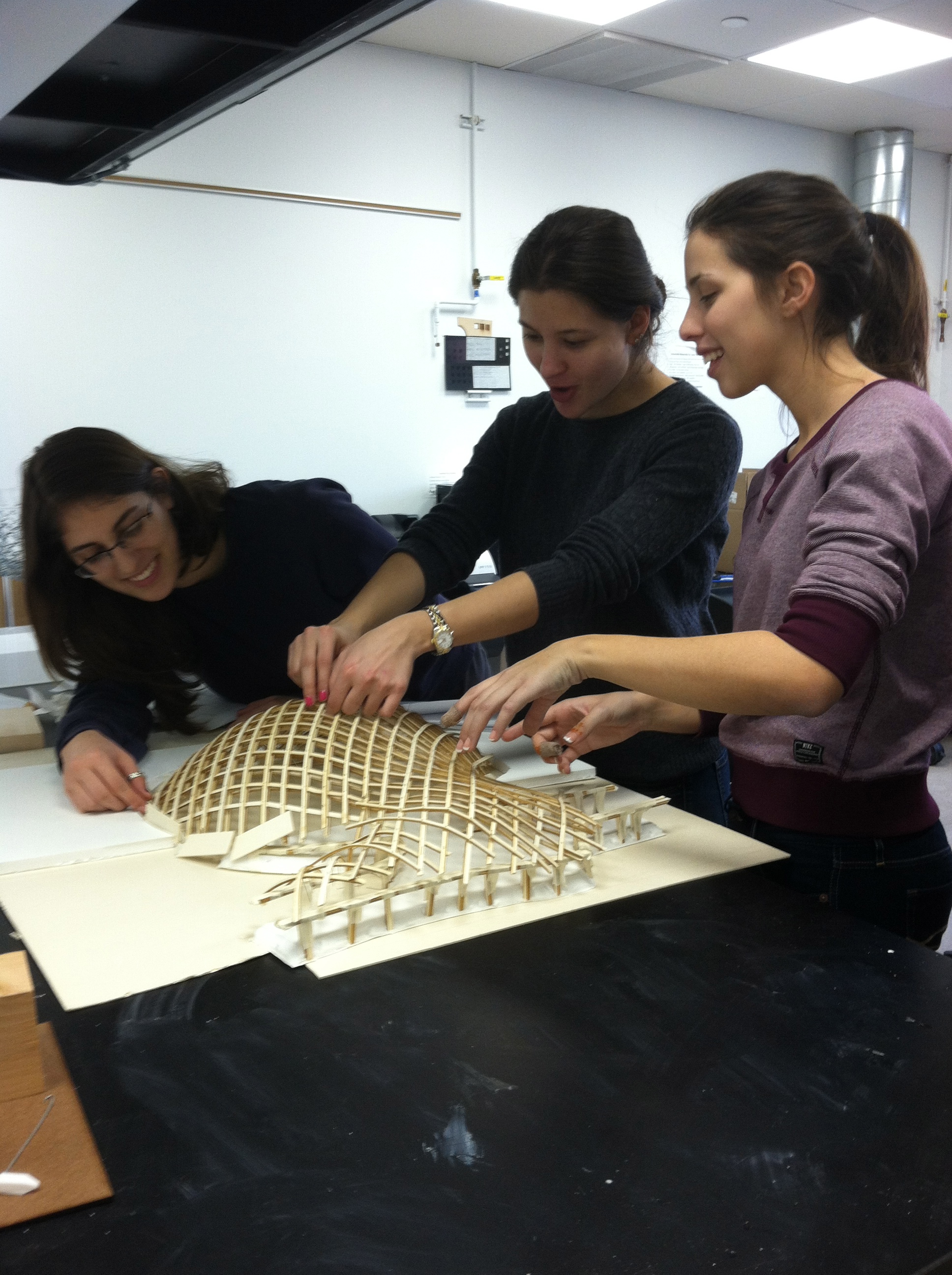 | 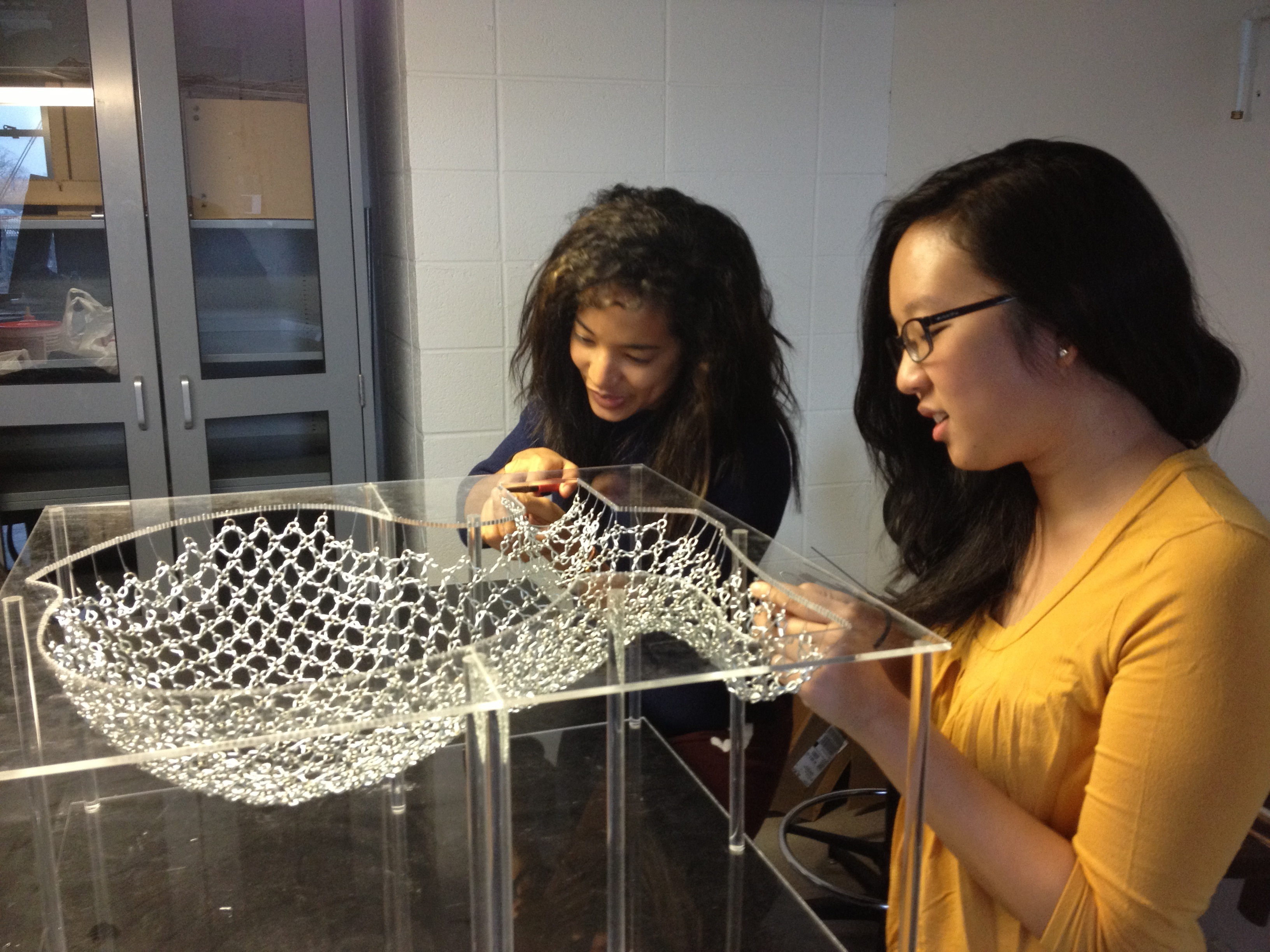 | 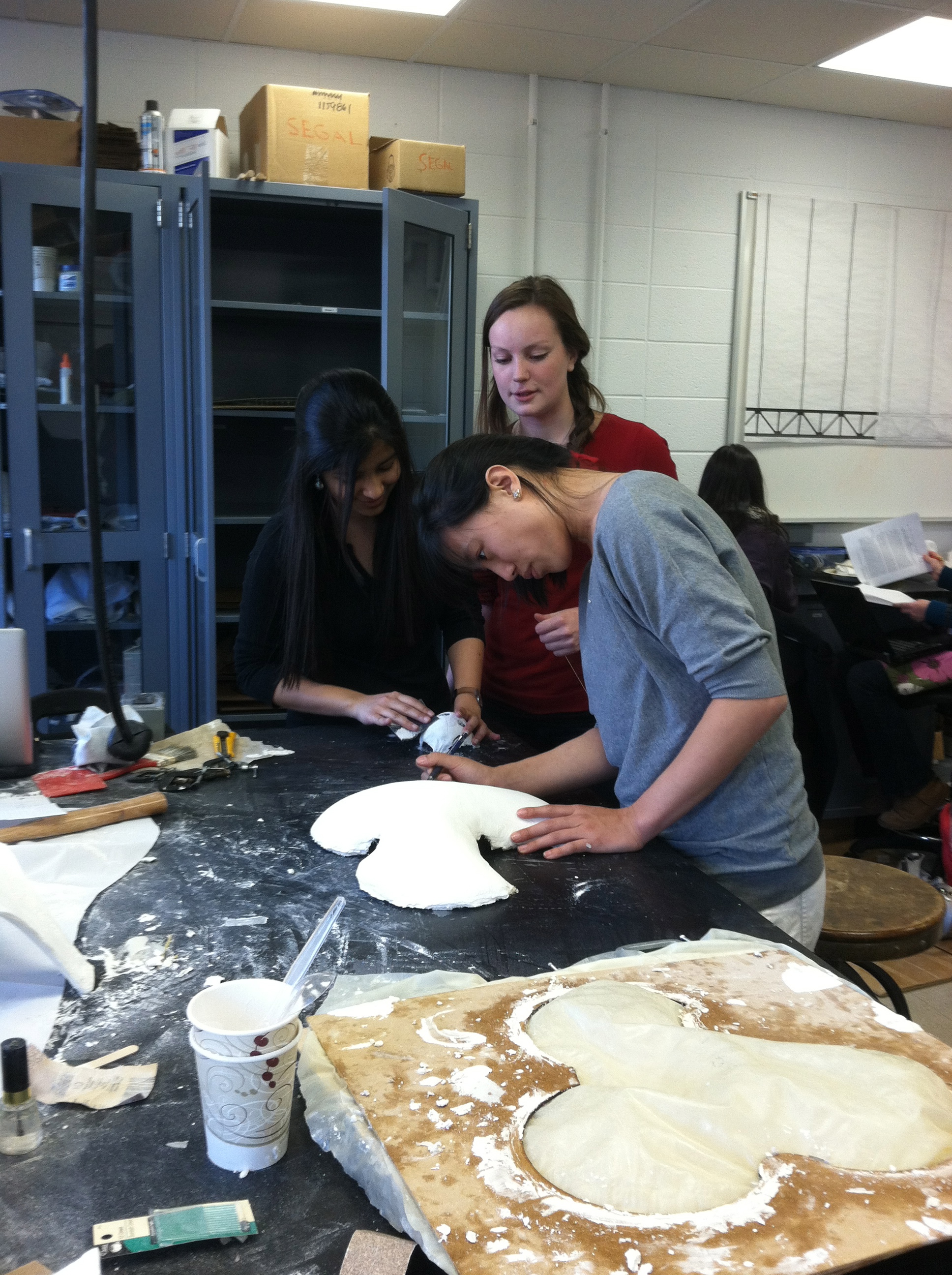 |
| Student groups constructing scale models of the structures studied in the course |
The best structures of our society (e.g bridges, buildings, towers, vaults) come to existence not only by selecting proper forms and making engineering calculations, but also by (1) knowing and working with the related economic and political circumstances, (2) developing an appropriate and economical construction process, which is intimately connected to the design, and (3) considering the environmental impacts of such a construction (i.e., durability and other sustainability and resilience measures). Yet a typical course of structural engineering study focuses only on the engineering calculations and not at all on these social aspects. This typical education is two-dimensional, that is, it is studied with sketches and, if you are lucky, photographs of real structures (although usually the latter is not done). Structures, however, are multi-dimensional: they have the three dimensions of space, plus the fourth dimension of time meaning that structures are not built to last only a few years (like cars for example) but over 100 years. Therefore, they must be durable, or in other words, sustainable and resilient.
CEE463 is a focused study of one "theme" that changes every year. The first theme, in the academic year 2010-2011 we had chosen the theme of tall buildings. This time, in the academic year 2012-2013 we chose shells, and in particular German shells as this is the birth place of modern shells, and also this is the place where the shell engineering is the most advanced and spreads into the XXI century. Our goal was to teach a course that enhances traditional structural engineering education by addressing identified, above described deficiencies of traditional way of teaching through the following pedagogical objectives: (1) reflect on aesthetics, (2) develop a sense of scale, (3) consider the environmental impacts of such a construction (i.e., durability and other sustainability and resilience measures), (4) learn to communicate ideas to the general public, and (5) reflect on the related economic and political circumstances. This new course builds on the well-established CEE 262: Structures in the Urban Environment.
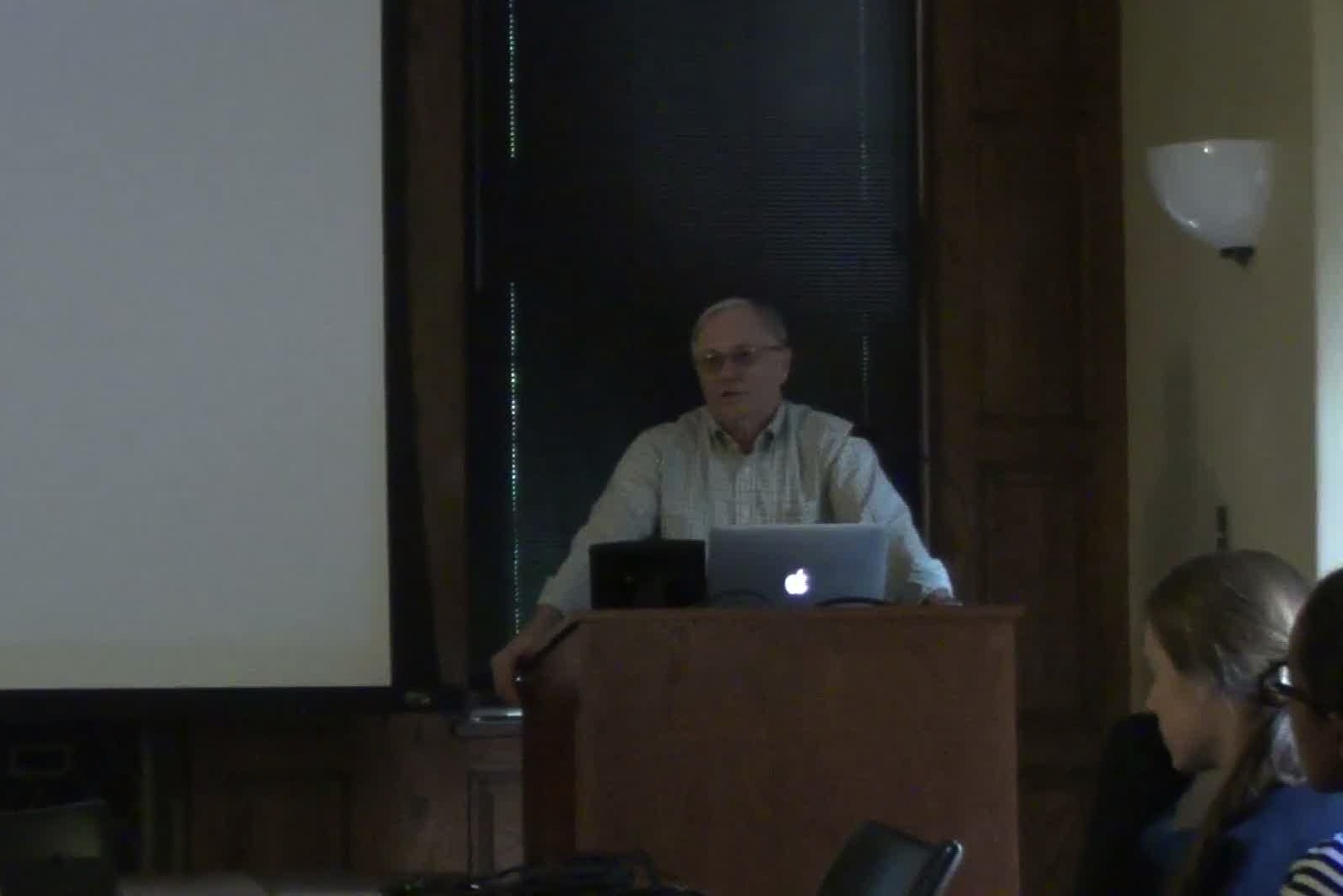 | 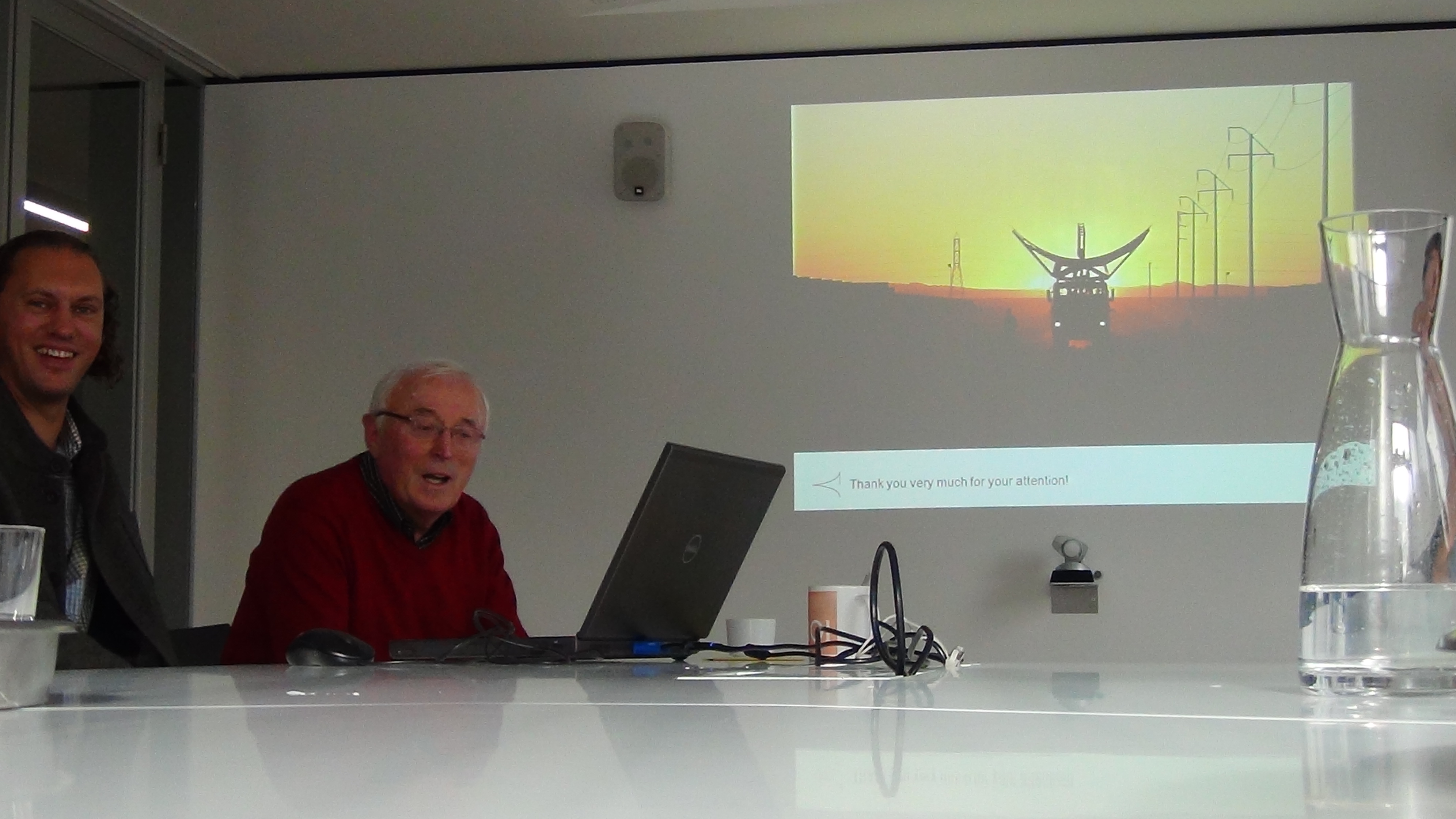 |
| Guest lecturer Professor John Abel discussing early German shell design | Markus Balz and Hans Schober from Schlaich Bergemann und Partner discuss their current projects with the students during an office visit |
More specifically, we studied the major works and innovations of number of structural designers (Franz Dischinger (1887-1953), Heinz Isler (1926-2009) and Jorg Schlaich (1934 - present) in collaboration with architects such as Michael Balz) of important shells built in Germany, such as the Leipzig Market Hall (Grossmarkthalle, 1930), Manheim Multi-hall (Multihalle de Bundesgartenschau, 1975), Grötzingen open-air theater (Naturtheater, 1977), Balz House (Haus Balz, 1980), and Courtyard Skylight of Hamburg History Museum (Hamburgmuseum, 1989). Within each theme, we expected students to develop engineering analyses of most important structural designs, study the social context, participate in a site visit, and make models of a few significant works to be placed on display as part of a small exhibition in the Engineering Library, Friend Center, Princeton University. Through site visits to these structures, the students gained a better sense of their scale and context as well as their influence on the environmental impacts (i.e. durability and other sustainability and resilience measures).
Finally, different perspectives to shell structures were given to students by our special guest lecturers Prof. David Billington, Princeton University, Prof. John Abel, Cornell University, Prof. Christian Meyer, Columbia University and Donald and Nina Worth, Friends of Miami Marine Stadium. They kindly accepted our invitation to participate in the course and with a lot of enthusiasm significantly contributed to both technical and educational part of the classes.
| Professors: Sigrid Adriaenssens Branko Glisic Teaching Assistant: Alex Jordan |
Students: Bennu Boyner Julie Ditchfield Yerab Ermias Gabriella Figueroa Tessa Maurer Thomas Mbise Anjali Mehrotra Jarred Mihalik Elizabeth O'Grady |
Margaret Owensby Victoria Richardson Bar Shabtai Sabrina Siu Peter Szerzo Melody Tan Ellen Tung Mariam Wahed Sekai Zengeza |
